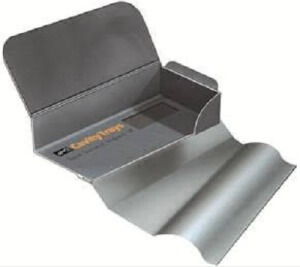 The severe winter storms of 2013 / 2014 subjected many masonry walls to days of heavy rain, resulting in masonry skins becoming overwhelmed. This term is used to describe what happens when wet weather (often wind-assisted) continues unabated beyond the point when the masonry becomes saturated. Water gravitating within and upon the (cavity facing) face of an exterior skin will free-flow to an extent that some DPC measures cannot adequately control.
The severe winter storms of 2013 / 2014 subjected many masonry walls to days of heavy rain, resulting in masonry skins becoming overwhelmed. This term is used to describe what happens when wet weather (often wind-assisted) continues unabated beyond the point when the masonry becomes saturated. Water gravitating within and upon the (cavity facing) face of an exterior skin will free-flow to an extent that some DPC measures cannot adequately control.
The amount of water permeating a wall will vary depending on the type of brick or block, the mortar specification and how well (or badly) the two are laid. Consider masonry manufactured and tested to BS 4315. This British Standard involves spraying water onto a given area at a rate of 2.5 litres per minute. The test takes place over 48 hours. Upon completion of the test it is not unusual to read the ‘bricks indicated very low levels of rates of rain penetration.’ It is often not realised the spraying is not continuous. It lasts just one minute, followed by an approximately half-hour pause, after which there is another minute of activity followed by another half hour pause and so on. Over 48 hours the extent of water spraying can amounts to approximately 1½ hours. (Intermingled with 46.5 hours of drying time)
If the rain in your district only ever falls for one minute and is always followed by half an hours’ drying time, then perhaps the Standard is meaningful? But is it realistic of the climate experienced in the UK?
Accompanying effective DPC control measures are essential. Controlling water migration through masonry requires arrestment and evacuation. It is interesting that once an average brick becomes saturated, its conductivity can double. So the thermal behaviour of the outside skin is less helpful to heat conservation and thermal integrity when wet – which is generally during the winter when the temperature is also at its lowest – when you most need to keep the structure warm.
Therefore controlling water and evacuating it out of the structure as swiftly as possible also makes good sense in terms of building envelope energy efficiency. Water retention within the wall should be avoided.
Cavity Trays of Yeovil manufactures an extensive range of problem-solving products and is the longest-established specialist in its field. It is also the only tray manufacturer awarded European Technical Approval and its products guard against the problems of overwhelmed masonry.
It has released an upgraded range of preformed cavitrays, incorporating several additional benefits. Trays now accommodate a wider range of cavity widths following enlargement of the cavity-spanning upstands. Standard trays now suit cavity widths from 50mm up to 160mm and a bespoke service operates to address requirements beyond this range. With anti-capillary features and arrestment channels, the trays offer more extensive protection. The Meteorological Board advises we can anticipate greater extremes of weather in the future, and Cavity Trays of Yeovil offers an approved range to protect cavity walls and them from being overwhelmed.

